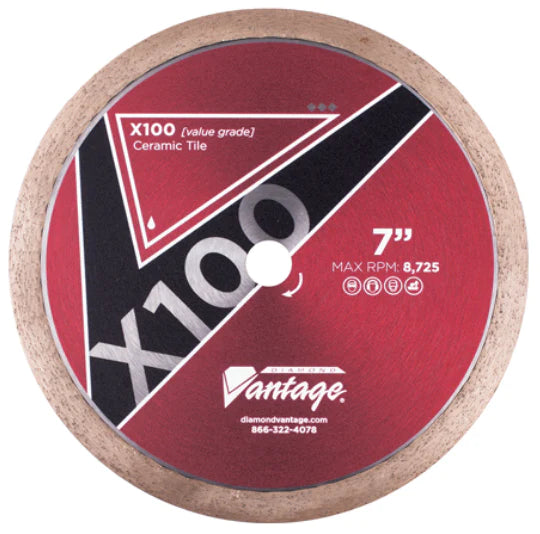When it comes to tile installation or renovation projects, achieving precise and clean cuts is crucial for a professional and visually appealing result. The secret behind flawless tile cuts lies in the power of the right tool: tile blades. In this comprehensive guide, we'll delve into the world of tile blades, exploring their types, features, and best practices for achieving outstanding results in your tiling endeavors.
-
Understanding Tile Blades:
- The role of tile blades in cutting ceramic, porcelain, and natural stone tiles.
- The difference between wet and dry tile cutting methods.
- Key components of a tile blade: diamond grit, rim design, and bond types.
-
Types of Tile Blades: a) Continuous Rim Blades:
- Ideal for smooth and chip-free cuts.
- Suitable for cutting delicate tiles such as ceramic and porcelain.
- Benefits and considerations when using continuous rim blades.
b) Segmented Rim Blades:
- Designed for faster cutting through tougher materials like natural stone and thick porcelain.
- Features distinct gaps between segments for enhanced cooling and debris removal.
- Tips for optimizing segmented rim blade performance.
c) Turbo Rim Blades:
- A versatile choice for both dry and wet cutting applications.
- Combines the benefits of continuous and segmented rim blades.
- Best practices for using turbo rim blades effectively.
-
Choosing the Right Tile Blade:
- Considering the tile material, thickness, and hardness.
- Understanding the required blade diameter and arbor size.
- Assessing the tile cutting method (wet or dry) and project scale.
-
Maintenance and Safety:
- Proper storage and handling of tile blades to maximize their lifespan.
- Regular cleaning to remove tile residue and prevent blade clogging.
- Safety precautions, including personal protective equipment (PPE) and safe work practices.
-
Tips for Achieving Precise Tile Cuts:
- Marking and measuring techniques for accurate cuts.
- Strategies for reducing chipping and splintering.
- Handling complex cuts, curves, and notches with precision.
Mastering the art of tile cutting requires the right combination of technique and tools, and tile blades are an indispensable part of the equation. By understanding the different types of tile blades, selecting the appropriate one for your project, and following best practices for maintenance and safety, you can achieve flawless results that showcase your craftsmanship. Now, armed with the knowledge from this guide, go ahead and elevate your tiling projects to new heights of precision and excellence.

